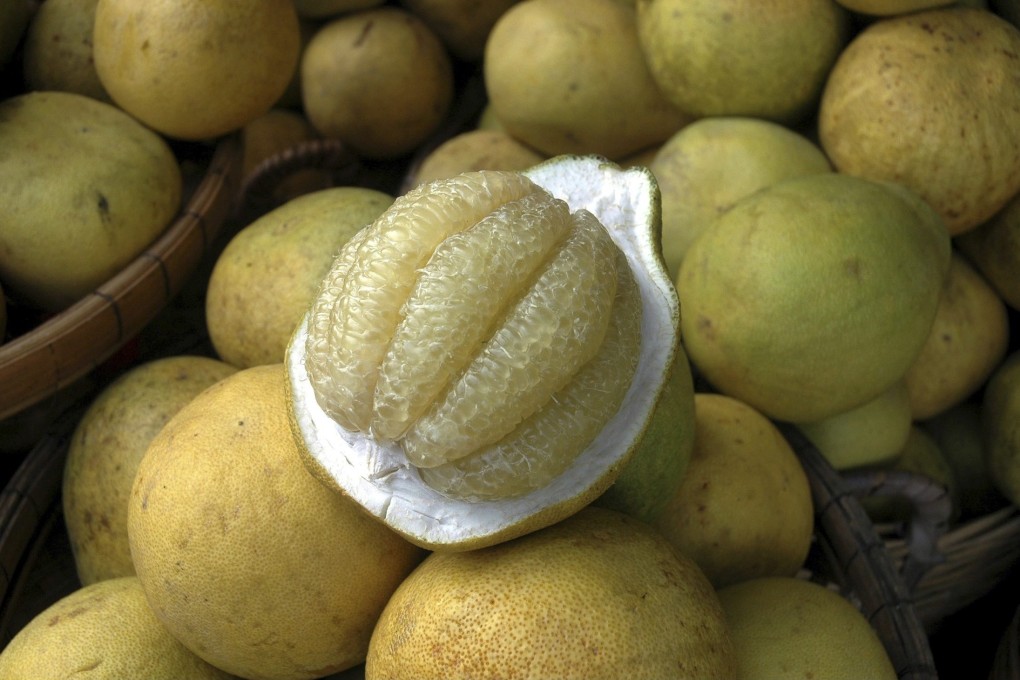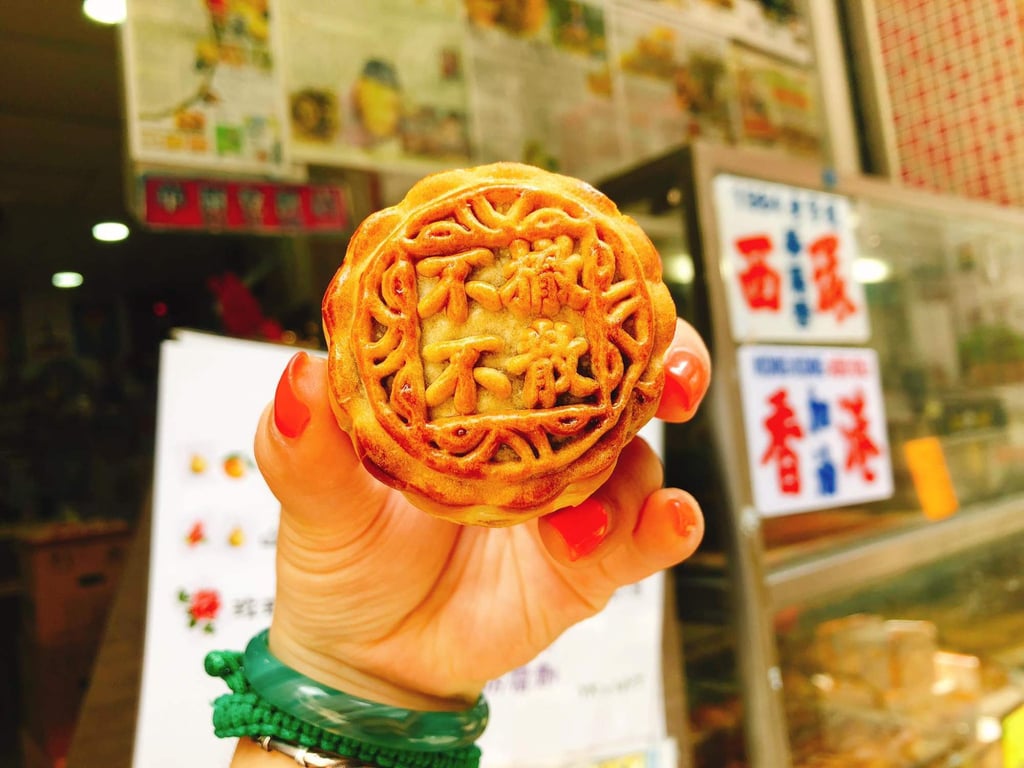Language Matters | Mid-Autumn Festival food like mooncakes, pomelo and lotus root all have auspicious meanings behind them – here are a few explained
- The pronunciation of ‘pomelo’ in Chinese is identical to the word for ‘bless’, while taro spoken in certain dialects sounds similar to ‘good luck is coming’
- Mooncake pastry encloses a filling of ingredients auspicious in name or form, including lotus seed paste and salted duck egg yolk

The full moon occurring closest to the autumnal equinox is significant to communities worldwide, and celebrated in many Asian countries as the Mid-Autumn Festival, focusing on family reunions and venerations of the moon. The foods associated with the festival comprise crops typically harvested in northeast Asia during this season, whose forms or names convey auspicious meaning.
The pomelo, whose spherical shape signifies the full moon, is 柚, which – pronounced yauh/yáu in Cantonese, yòu in Mandarin – is identical to the word 佑, which means “bless (the children)”. Similarly, the name for lotus root 莲藕 – lìhn ngáuh in Cantonese, liánǒu in Mandarin – is homophonous with 连 “togetherness” plus 偶 “pair”, with its growth in sections representing new opportunities. The pronunciation of taro 芋頭 – yùtou in the Wu variety in Jiangsu and Zhejiang dialects – is similar to 余头 yútóu meaning “good luck is coming”.
Water caltrops, on the other hand, are jet black, and, shaped with pointed ends resembling a bat or bulls’ horns, are known as 菱角 lìhng gok, “water caltrop” plus “horn”. Though not moon-like by any means, their form earns them the alternate names of buffalo nut or bat nut – and with the word for “bat” 蝠 – Cantonese fūk, Mandarin fú – being homophonous with the word for “prosperity” 福, serving and eating water caltrops is thought to bring good fortune.
And what would the festival be without its mooncakes? Originally a calque from the Chinese 月餅 (Cantonese yuht beng, Mandarin yuèbǐng) “moon” plus “cake, pastry” – an early mention is found in a 1688 translation of Portuguese missionary Gabriel de Magalhães’ A New History of China, which describes “Yue Pim, or Moon-Cakes. They are round […] and represent the Full Moon” – the word is now included in the Oxford English Dictionary.

Mooncake pastry encloses a filling of ingredients auspicious in name or form, such as lotus seed paste, or, in the Cantonese version, one (or up to four) salted duck egg yolk, again representing the full moon.
